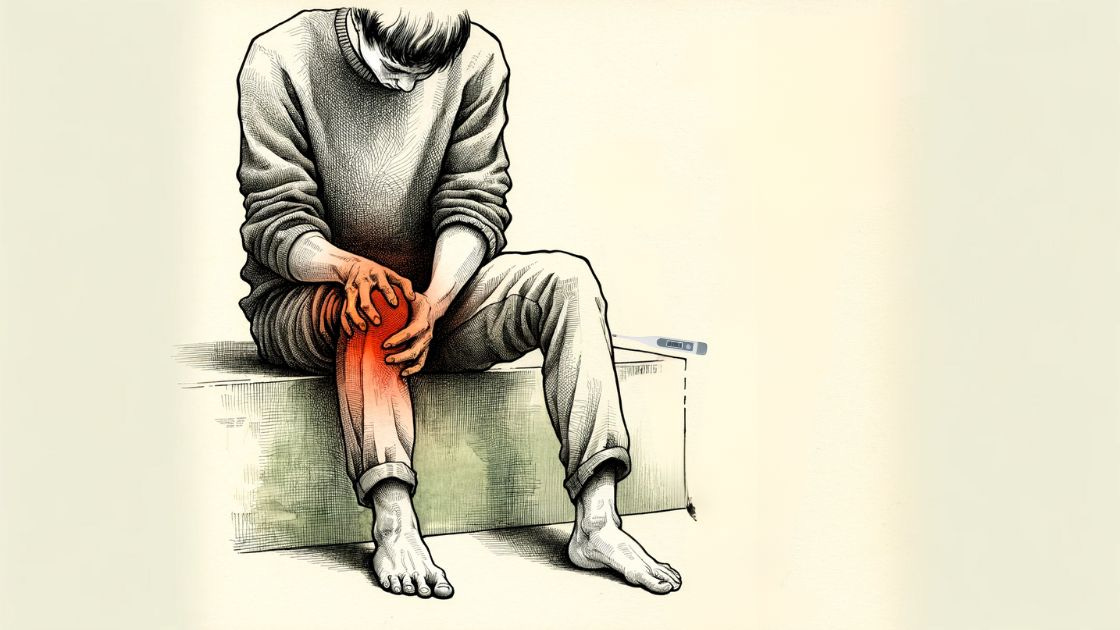New research on RLS and PLMD, plus auto-inflammatory conditions
Histaminergic neurons may be involved in limb movement in sleep.
Hey there,
I mentioned last week that my goal for 2024 is to stay curious and keep digging into the new research on health and genetics.
Today I wanted to highlight an article that I've extensively updated with new research that I think adds quite a bit to the topic.
The first article below is about Restless Leg Syndrome (RLS) and Periodic Limb Movement Disorder (PLMD). It is estimated that ten percent of the population suffers from these conditions, which can have long-term health implications due to decreased sleep quality.
For the past couple of months, I've been working on a book on histamine-related health issues. Since I have already written several articles on the subject, I thought it would be helpful to put it all together in one cohesive book. Well, it turned out to be a bigger project than I anticipated. The amount of recent research on histamine receptors and mast cells is enormous. (Sign up here to be notified when the book launches)
How does this relate to PLMD and RLS? In looking at research on the function H3 histamine receptor, I came across several new animal studies on restless leg syndrome showing that the H3 receptor is involved in limb movements during sleep. Histamine acts as a neurotransmitter in the region of the brain that controls movement.
For anyone dealing with RLS or PLMD, please revisit the article and the updated Lifehacks section. Quality sleep is so important for overall health!
Feel free to share the RLS/PLMD article with friends and family this week. I've opened up the Lifehacks section for everyone to read.
The second article is about Familial Mediterranean Fever, which is an auto-inflammatory, genetic disease. It has also been updated with some new research. In a nutshell, familial Mediterranean fever is caused by a mutation in the pyrin gene. This causes periodic episodes of inflammation. FMF is often misdiagnosed as fibromyalgia, rheumatoid arthritis, or myofascial pain syndrome.
Take care,
Debbie
Restless Leg and Periodic Limb Movement Disorder: Genes and Solutions
Key takeaways:
~ Restless leg syndrome (RLS) and Periodic Limb Movement Disorder (PLMD) can disrupt sleep and have significant long-term effects on your health.
~ Genetic variants play a role in susceptibility to RLS and PLMD.
~ Animal studies shed even more light on the root causes, pointing to a couple of pathways in the brain.
I’m diving into the genetics of restless leg syndrome and periodic limb movement disorder to show how understanding the root causes can help you to find solutions.
Familial Mediterranean Fever: Mimics fibromyalgia, arthritis, inflammation
Key Takeaways:
~ Familial Mediterranean fever (FMF) is a genetic autoinflammatory condition, causing episodes of painful joints, pain in the abdomen, or pain in the chest, often accompanied by a fever.
~ Mutations in the MEFV gene can cause familial Mediterranean fever, but not everyone with the mutation will have FMF.
~ FMF is often misdiagnosed as fibromyalgia, gouty arthritis, myofascial pain syndrome, lupus, or rheumatoid arthritis.
This article explains the background science of the MEFV gene, how to check your genetic raw data for MEFV variants, and possible solutions.
What I've been reading:
1) Rare genetic variation in Fibronectin 1 (FN1) protects against APOEe4 in Alzheimer’s disease
This preprint study explains that lower fibronectin 1 deposits may be protective against Alzheimer's in people with the APOE E4 allele. While still needing further review and validation, this could be a significant breakthrough in understanding Alzheimer's pathology. Fibronectin is important in cell adhesion, is a part of the blood-brain barrier, and is important in blood vessel size. It is increased in people with APOE E4 alleles, according to this study.
2) Nanoplastics in bottled water
Nanoplastics are tiny particles of plastic that are a problem in the body because their small size may allow them to enter cells. This new study found that the amount of nanoplastic in bottled water is about 100 times higher than previously thought.
3) Dietary circadian rhythms and cardiovascular disease risk in the prospective NutriNet-Santé cohort
A new analysis of meal timing and the risk of cardiovascular disease. The results showed that eating dinner earlier was associated with a lower risk of cardiovascular outcomes compared to late dinners. The conclusion: " Our results suggest a potential benefit of adopting earlier eating timing patterns, and coupling a longer nighttime fasting period with an early last meal, rather than breakfast skipping, in CVD prevention."
While not a new study, this may be interesting to anyone dealing with neuroinflammation. PEA (palmitoylethanolamide) is a fatty acid that acts somewhat like an endocannabinoid. Luteolin is a natural supplement with neuroprotective benefits. (More on luteolin)






